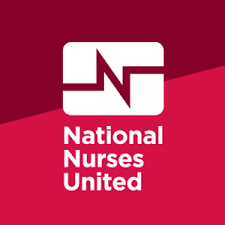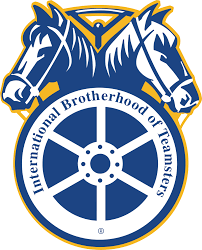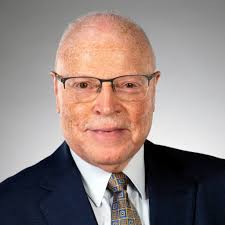New York, NY – A new report from the Center for Migration Studies [CMS] examining the exploitation of immigrant workers in New York City’s construction industry has a number of recommendations for unions about how they can help better address the problem — but organized labor faces significant restraints.
Predatory developers in New York City have long capitalized on a built-in pool of vulnerable immigrant workers they can easily rip off, abuse and discard without too much pesky government interference.

The CMS’ “Climbing the Ladder: Roadblocks Faced by Immigrant in the New York City Construction Industry” confirms that pool is, indeed, deep and wide with immigrants constituting more than 60-percent of New York City construction workers on the job today — a whopping 41-percent of them undocumented.
Immigrants in New York City’s construction industry command a greater quality of life when they unionize. First and foremost — they’re a lot safer. Nearly 80-percent of the construction worker fatalities OSHA investigated statewide in 2020 happened on non-union job sites, according to NYCOSH’s latest Deadly Skyline report. In New York City, non-union construction workers constituted 100-percent of the fatalities OSHA probed that year.
Latinos alone, accounted for nearly 20-percent of New York State’s worker fatalities in 2020, according to the findings.
The CMS’ “Roadblocks” report, meanwhile, finds immigrant workers with limited English proficiency are “more likely to work in construction occupations with higher fatality rates” and non-union work sites “regularly violate the standards intended to safeguard workers from falls.”
Undocumented construction workers who manage to survive their often dangerous non-union work sites, continue to exist on the fringes of society, earning a median annual salary of just $30,100, according to the CMS report.
Despite all this, Jeff Hermanson, director of Organizing at the Solidarity Center, this week stressed how getting a union job in this town is “almost impossible” for undocumented immigrant construction workers.
“The unions themselves place some obstacles,” Hermanson said at a CMS “Roadblocks” report briefing held May 23. “In recent years, I think unions have recognized the need to organize immigrant workers — the need to find ways to organize undocumented immigrant workers — and they’re really changing their practices.”
At the same time, however, Hermanson says unions are “prevented from really opening up the union apprenticeship programs because they’re federally funded — and the federal funds prevent unions from opening up the apprenticeship programs to workers without work authorization.”
Authors of the CMS report are joining other worker advocates behind a group of statewide policy measures aimed at combating further exploitation that includes protecting the New York Scaffold Law; passing “Carlos’ Law”; and insisting on prevailing wages for construction workers as part of any subsided housing development pact succeeding the 421-a program.
They’re also calling on the city to help workers’ centers and other community-based organizations provide more job training, and to do better communicating with all workers about their rights.
Nationally, the CMS authors are reenforcing calls for prevailing wages to be attached to federal infrastructure funding; more inspectors to target dangerous non-union construction sites, and comprehensive immigration reform and a pathway to permanent residency.
But they’re also urging New York City unions to “not exclude members on the basis of immigration status, adding “federal apprenticeship programs should not require social security numbers for entry.”
The CMS report also calls on New York City’s unionized Building Trades to promote greater employment stability within individual companies; further diversity organizers and representatives; and partner more with community-based organizations to help immigrant workers acquire better training and language skills.
Eddie Jorge, New York State Ironworkers District Council Organizer, agrees unions should do more to aid unorganized immigrant workers, but says help is not coming fast enough due to the inaction of supporting bureaucrats and politicians.
Last month, Ironworkers Local 197 made history successfully organizing workers employed at U.S. Crane and Rigging — one of the most powerful and problematic outfits in the city — for the first time ever.
“If [Senator Chuck] Schumer would add one sentence to the I-9 [Employment Eligibility Verification] reform — add wage theft as one of the provisions — we will be able to help a lot of workers in this country,” Jorge told LaborPress.
Rubén Colón, a representative with the New York City District Council of Carpenters [NYCDCC] Area Standards Department, says federal apprenticeship programs should “evaluate their position and rationale” regarding Social Security documentation.
“Such programs should be accessible to all,” he told LaborPress. “However, by that same token we must be cautious, the credibility of Federal Apprenticeship Programs must be maintained or we all suffer, union and nonunion alike.”
Immigrant construction workers who unionize in New York State also earn 64-percent more than those who do not, according to the CMS “Roadblocks” report.
“If you wish t organize Martians, than we better hire us some Martians,” Colón says. “At our highpoint, the NYCDCC Area Standards Department, our equivalent to an Organizing Department, 50-percent of our staff were persons of color with 10-percent being Female. Currently, 37-percent of Area Standards Department Reps/Organizers are persons of color, and 25-percent are female.”
Sara Feldman, interim deputy chief of staff at NICE [New Immigrant Community Empowerment], supports the CMS findings and would also like to see protections for immigrant workers put in union contracts “in the event that a documented worker loses their status,” which could happen if someone’s work permit, for example, doesn’t get renewed on time or the Deferred Action for Childhood Arrivals policy is suspended. “Include in the contract that the employer should refrain from using E-verify,” she said.
Editor’s Note: This story was updated to include comments from NICE.





